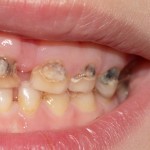
A caries risk assessment method (CRAM) is described as any model using any individual risk of protective factor to predict caries progression or development. Combination of CRAMs) have been combined into caries risk assessment tools (CRATs) for example, Caries Management By Risk Assessment (CAMBRA), American Association of Paediatric Dentistry Caries Assessment Tool (AAPD CAT), and Cariogram.
The aim of this review was to assess the strength of evidence to inform the selection of CRATs for children ages 6 years and less.
Methods
Searches were conducted in the Medline/PubMed, Cinhal and Scopus databases. Peer-reviewed studies describing CRATs and their development methodology in children ≤6 years were considered. Two reviewers independently screened studies with study quality being assessed using the COnsensus-based Standards for the selection of health Measurement INstruments (COSMIN) checklist.
Results
- 10 studies assessing 8 different CRATs were included.
| Caries risk assessment tool | Number of Items |
| University of North Carolina Caries Risk Assessment studies (UNCCRA) | 15 |
| University of Michigan paediatric dental clinic CRA sheet (UMCRA) | 14 |
| Cariogram | 9 |
| National University of Singapore caries risk assessment tool (NUS-CRAT) | 11 |
| Dundee Caries Risk Assessment Model (DCRAM) | 2 – 5 |
| American Academy of paediatric Dentistry Caries Assessment Tool (AAPD CAT) | 14 |
| Caries Management by Risk Assessment (CAMBRA) | 20 |
| MySmileBuddy (MSB) | 5 assessment modules |
- Common across all CRATs was the lack of information to determine the levels of evidence for the measurement properties of reliability and construct validity.
Conclusions
The authors concluded: –
The evidence to inform the selection of current CRATs for children is mostly yet to be established. Overall, the NUS-CRAT studies reported the most information to inform the assessment of its measurement properties and as a result this tool attained a higher quality rating than other CRATs studied.
Comments
There have been a number of reviews on caries risk assessment, the most recent one we considered in this blog was in 2018 (Dental Elf- 28th Aug 2018). That review focused on validity and providing information of the sensitivity and specificity of SCRATs. This review takes a broader approach including consideration of measurement error, construct and content validity although restricting the age group to children ≤6 years. While this review does give a broader appraisal of some CRATs the underlying issues highlighted by this an earlier reviews is that the available evidence for these approaches and still limited and high quality prospective studies are needed to develop appropriate tools for clinical use.
Links
Primary Paper
Christian B, Armstrong R, Calache H, Carpenter L, Gibbs L, Gussy M. A systematic review to assess the methodological quality of studies on measurement properties for caries risk assessment tools for young children. Int J Paediatr Dent. 2018 Nov 9. doi: 10.1111/ipd.12446. [Epub ahead of print] Review. PubMed PMID: 30412330.
Other references
Dental Elf- 28th Aug 2018
Dental Elf – Caries Risk Assessment Blogs
